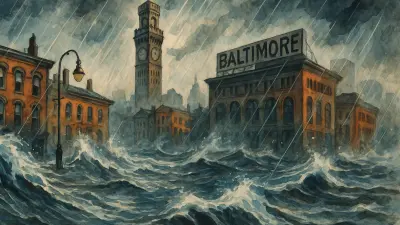Given the conditions, motorists should avoid flooded roads and stay alert to changing weather messages.

The National Weather Service has issued a flood watch for Baltimore and surrounding counties following a potent combination of tropical moisture and a stalled frontal boundary, raising fresh concerns just weeks after a continuous string of damaging downpours.
Residents can expect slow-moving thunderstorms capable of dumping up to 1 to 3 inches of rain within a single day and isolated pockets may see as much as 5 inches.
Individual storm cells could produce intense bursts, delivering up to 2 inches of rain per hour and triggering rapid urban and small-stream flooding across the region.
This flood watch extends through midnight Wednesday as the atmosphere remains primed for downpours. S
ince heavy ground saturation is already in place following prior rainfall, the risk of flash flooding, particularly in low-lying or poorly drained urban areas, has elevated to “moderate,” according to the Weather Prediction Center .
Thunderstorm hazards go beyond water.
The NWS warns of damaging wind gusts and frequent lightning within these systems. The Baltimore Metro area faces the risk of severe storms, although areas south and west of the Potomac River are at even greater vulnerability.
The outlook for the entire weekend is showers and scattered storms through Sunday, with precipitation chances staying high and ranging from 50 %to 80% on Saturday and 40% to 60% on Sunday. A brief respite is expected early next week as higher pressure builds, allowing temperatures and humidity to ease .
Flash flooding isn’t merely theoretical: Howard County emergency officials reported more than 1½ inches in Ellicott City in just one hour on Monday night. That deluge triggered water pooling across major routes and prompted activation of the county’s emergency operations center Howard County.
Given the conditions, motorists should avoid flooded roads and stay alert to changing weather messages.
With thunderstorms likely around peak afternoon and early evening hours, short-term flooding could unfold rapidly, especially in areas with limited drainage infrastructure.







